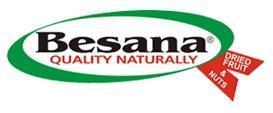
Sunflower Seeds
€ Core price
General information
Sunflowers’ belong to the family ‘Asteraceae’ and are an annual herbaceous plant with a big flower head. The common Italian name comes from the fact that the flower head is rotating during day following the sun. This is named as heliotropism. The flower head is made up of different parts. The outer forets can be yellow, brown, orange or of other colours and are sterile. The forets inside the circular head are called disc forets. The forets within the sunflower’s cluster are arranged in a spiral pattern. Typically each foret is positioned toward the next producing a pattern of interconnecting spirals. The disc forets mature into what are traditionally called sunflower seeds, but are actually the fruit of the plant. The inedible husk is the fruit wall and the true seeds lie within the kernel. Sunflower stems can grow as high as 1.5-2m. The leaves (which vary in number but generally 12-40 leaves) are big, long and simple and their form changes according to the position along the stem.
Health Benefits
Sunflower seeds are a good source of Vitamin B1, B2, E, D, magnesium (anti-stress mineral), iron and contain many micro nutrients such as cobalt, manganese, zinc and copper. They also have a high linoleic acid content, one of the precursors of essential fatty acids.One can add the presence of phenols, active substances with recognised preventive properties in degenerative diseases, in particular tumours and arteriosclerosis. Sunflower seeds are important in official pharmacology containing many recognised anti fever and diuretic components.
Varieties
Mammoth Russian
Giant Grey Striped
Double Dandy
Ring of Fire (U.S.A.)
Available:
NATURAL, ROASTED.
Supplier


Company

Website
 Italy
Italy
Country
Product details
Place of processing
-
Origin of main ingredient

Origin of main ingredient

Packaging formats

Packaging

Composition


